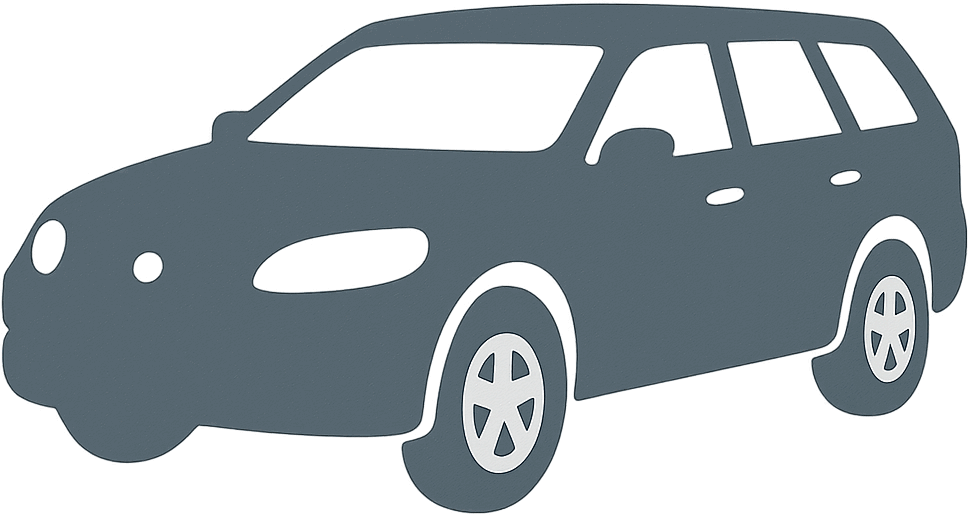 1954 DeSoto Firedome All-Steel Station Wagon (facelift 1954) Dimensions, Size & Specs
1954 DeSoto Firedome All-Steel Station Wagon (facelift 1954) Dimensions, Size & Specs
Measurements of the 1954 DeSoto Firedome All-Steel Station Wagon, engineered for optimal performance and comfort
| Dimensions | |
|---|---|
| Length: | 5439 mm214.1 in17.8 ft |
| Width: | 1972 mm77.6 in6.5 ft |
| Height: | 1632 mm64.3 in5.4 ft |
The 1954 DeSoto Firedome All-Steel Station Wagon represents a unique blend of mid-20th-century American automotive design and practicality. Produced briefly between 1953 and 1954, this generation of Firedome station wagon marked an important evolution with its all-steel body construction, enhancing both durability and safety. The vehicle measures a substantial 5439 mm (214 inches) in length, making it spacious enough to comfortably accommodate families and cargo alike. Its width spans 1972 mm (77.6 inches), providing a broad, stable stance on the road and contributing to a roomy interior cabin. The height of the station wagon reaches 1632 mm (64.3 inches), balancing ground clearance and a sleek profile typical of the era's wagons. This sizeable footprint categorizes the DeSoto Firedome All-Steel as a full-size station wagon, ideal for drivers seeking both style and utility in a classic car. Its design reflects the 1950s automotive trend towards larger, sturdier vehicles delivering versatile usage and road presence. Combining robust dimensions with the distinctive visual cues of the Firedome series, this station wagon remains a notable example of vintage American car manufacturing and design excellence from the early 1950s.
Discover the standout features that make the 1954 DeSoto Firedome All-Steel Station Wagon a leader in its class
Have a question? Please check our knowledgebase first.
The 1954 DeSoto Firedome All-Steel Station Wagon measures 5439 mm (approximately 214.1 inches) in length, 1972 mm (around 77.6 inches) in width, and 1632 mm (roughly 64.3 inches) in height. These dimensions reflect a sizeable classic station wagon typical of the early 1950s, offering spacious interior seating and cargo capacity. The wide body and tall profile were designed to maximize interior room, characteristic of station wagons of this period.
With a width of 1972 mm (77.6 inches), the 1954 DeSoto Firedome Station Wagon is wider than many contemporary sedan vehicles but comparable to larger modern SUVs and full-size cars. This width provides ample space inside but can make maneuvering in tight urban spaces or narrow parking spots more challenging compared to modern compact cars. Drivers should be mindful of wider turns and parking space requirements due to the broader stance.
The height of the 1954 DeSoto Firedome Station Wagon is 1632 mm (64.3 inches). This relatively tall stature for a vehicle of its era affords generous interior headroom for passengers in both front and rear seats. The ample vertical space also benefits cargo capacity, allowing for taller or bulkier items to be accommodated with ease, making the vehicle practical for family or utility use.
At 5439 mm (214.1 inches) in length, the 1954 DeSoto Firedome Station Wagon is on the longer side for early 1950s station wagons. This extended length translates to increased passenger seating capacity and larger cargo area, ideal for family or utility purposes. However, the longer size may affect ease of parking and maneuverability, particularly in urban environments or tight spaces common today.
Standard garages, especially in modern homes, typically range around 2440 mm to 2740 mm (8 to 9 feet) wide and around 4875 mm (16 feet) deep. The 1954 DeSoto Firedome is 1972 mm (77.6 inches) wide and 5439 mm (214.1 inches) long. While the width is manageable for most single-car garages, the length exceeds some garage depths, potentially requiring careful parking or garage dimension verification to ensure a comfortable fit. Older or oversized garages might accommodate it more easily.
The 1954 Firedome All-Steel Station Wagon followed the previous 1953 models with very similar overall dimensions, as it was essentially a facelift rather than a full redesign. The length and width remained close to 5439 mm and 1972 mm respectively, indicating that the updates focused more on styling and features rather than altering the physical footprint. Thus, usability and interior space remained consistent with the earlier generation.
During the early 1950s, the DeSoto Firedome station wagon competed with models from brands like Chevrolet, Pontiac, and Ford. Its length of 5439 mm (214.1 inches) and width of 1972 mm (77.6 inches) positioned it among larger, more upscale station wagons, offering a more robust and stylish all-steel body construction compared to some competitors which still used wood sections (often called 'woodies'). The Firedome's dimensions made it a roomy and comfortable family vehicle but also demanded more space for parking compared to smaller competitors.
The sizable dimensions of the 1954 DeSoto Firedome All-Steel Station Wagon, especially its length of 5439 mm (214.1 inches) and width of 1972 mm (77.6 inches), translate to generous interior space. This offers comfortable seating for multiple passengers, typically accommodating six to eight people depending on configuration. The increased interior volume also allows for expanded cargo capacity, making it ideal for family trips or transporting bulky items. The tall roofline (1632 mm / 64.3 inches) further enhances usable vertical cargo space.
The 1954 DeSoto Firedome All-Steel Station Wagon featured an all-steel body construction, a notable advancement over the earlier 'woodie' station wagons which still incorporated wood panels. This not only improved durability and maintenance but also allowed for sleeker styling and better safety. The 1954 facelift included updated front and rear designs with more contemporary chrome accents and grille work, enhancing its appeal. Mechanically, the Firedome usually featured a V8 HEMI engine providing solid performance for the era.
While exact curb weight figures vary, the 1954 DeSoto Firedome All-Steel Station Wagon, due to its large dimensions, all-steel construction, and V8 engine, would generally weigh around 1800 to 2200 kg (approximately 4000 to 4850 lbs). This mass impacts fuel efficiency, which was modest compared to modern fuel-efficient cars. Expect fuel consumption typical of 1950s full-size V8 station wagons – generally in the range of 9 to 13 miles per gallon (around 20-15 L/100km). Owners valued power and space over fuel economy during this era.
Discover similar sized cars.

| Production: | 1953-1954 |
|---|---|
| Model Year: | 1954 |
| Length: | 5439 mm214.1 in |
| Width: | 1972 mm77.6 in |
| Height: | 1632 mm64.3 in |
